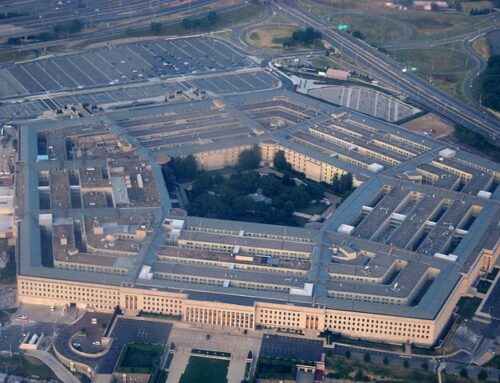Having stepped back from the brink of shutting down the federal government, now the Congress, specifically the Senate, plans to start taking action on Fiscal Year 2022 appropriations bills.
That’s right, days after the new fiscal year started the Senate Appropriations Committee is finally thinking about moving a few of the dozen spending bills that fund the federal government. What a world! But we’ll take whatever progress we can get before Congress is once again paralyzed by the possibility of defaulting on the nation’s credit card bill or other crisis.
One of the spending bills that has been written in subcommittee and is ripe for consideration in the full committee is the one funding the Department of Veterans Affairs and Military Construction (MILCON) projects of the Department of Defense.
Reviewing the Senate MILCON-VA bill for items of interest we found a handful of construction projects that weren’t in the President’s FY22 Budget request nor on any Unfunded Priorities List (UPL) we could get our hands on. Congress adding funds not requested by a president, not a surprise. Exactly what they’re funding, however, that’s another story.
There were a few labeled “Cost to Complete” which is a questionable practice. “Cost to Complete” are projects that have been duly started by previous legislation and someone, presumably the lawmaker in whose district the project resides, is trying to hurry up and get it finished at a faster pace than the Pentagon is asking for the money. And while that’s annoying, it’s not the type of real fiddling with the process that is seen in the majority of the items we found that were not on any UPL. These were marked “Planning & Design.” This is because it appears some senators have designed a plan to jump-start their pet projects.
Under longstanding MILCON rules a project must be 35 percent designed before it can be fully funded. This is meant to ensure a design is mature enough to allow an accurate cost estimate for completion of the project. This threshold was set by Defense Technical Information Center (DTIC) in this document in the 1990s. This isn’t news.
The bill has 25 MILCON projects for which there was ZERO construction dollars requested in the Administration’s budget that are specifically funded for “Planning and Design” in the SAC markup. For comparison, there were no such projects identified in the draft MILCON bill in the House. Of the 25, 17 of them were requested by appropriators. Sen. Heinrich (D-NM), the MILCON chair, requested six of those (with Sen. Lujan, another New Mexico Democrat) and Sen. Reed (D-RI) requested four of them, by himself. So, just two Senators on the Appropriations Committee got ten of the 25 projects requested in advance of reaching the normal design threshold.
The dollars are not large because Planning and Design is pretty cheap (in the world of Pentagon spending). The total is $114 million.
The total to Appropriators (or where at least one requester is an Appropriator) is $70.4 million.
The total for Sen. Heinrich is $21.3 million.
The total for Sen. Reed is $8.3 million.
You can check out our handy chart of all of the accelerated programs, for all the details.
This, is news. What makes this problematically intrusive is, typically, a final decision on whether to proceed and when to proceed to construction isn’t made until planning and design is done and reviewed. Under the normal process, the military service has the opportunity to calculate a relatively firm cost for the project and then weigh the costs and benefits to set priorities on what will be requested in the next year’s budget. Forcing Planning and Design to begin on specific projects does two things:
- It potentially speeds up the timetable of a project that may not be high on the Administration’s priority list, and
- It potentially locks in the project for construction funding, even if Planning and Design surfaces problems with the project, or unduly high costs. This dodge of the normal design process makes it obvious there is high level Congressional interest in a project. Given that, the military service is unlikely to either abandon it or give it a lower priority even if it doesn’t make sense.
The program receiving the largest P&D funding is the “Homeland Defense Radar” in Hawaii. This is a controversial program. Sens. Hirono (D-HI) and Schatz (also a Hawaii Democrat and an Appropriator) are asking for $19 million in P&D. As Politico noted during its coverage of the NDAA mark, “Hawaii missile defense radar: The bill authorizes $75 million for Hawaii’s homeland defense radar, which the Pentagon did not request in its budget. The missile defense radar program has been an item of lawmaker interest, and Senate Armed Services and the House Appropriations Committee have both rebuffed the Pentagon and backed funding for the program.”
We wish we could tell you the full cost of the projects that are being sped up by this process. But, since design isn’t complete, it’s impossible to know how many hundreds of millions of dollars these projects will ultimately cost.
By using this process dodge, the Senate is standing on the threshold of earmarking and measuring the room for drapes. This is an insidious encroachment on a project planning process that has served the Pentagon well for decades. Senators are substituting their “judgment” on what projects to fund by reshuffling the deck in a way they hope will benefit their states. But at TCS we know what Senators are really doing: putting the thumb on the scale for parochial preferred projects.











Get Social